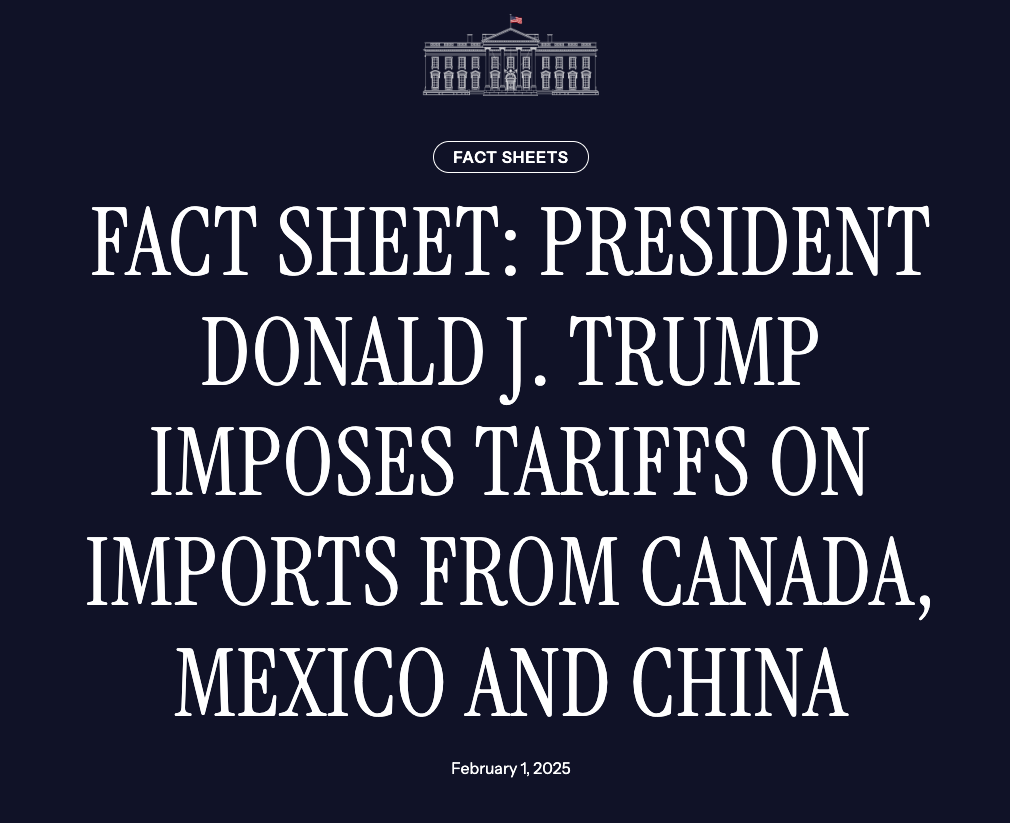by Ronan Manly, BullionStar:
 Since 25 November when then US president elect Donald Trump first threatened to impose import tariffs on Mexico, Canada and China ( see “Trump Tariffs will Trigger Global Trade War, with Gold and Silver Set to Benefit“), gold markets in New York and London have been signalling fears that these tariffs would include gold and silver imports from Mexico and Canada.
Since 25 November when then US president elect Donald Trump first threatened to impose import tariffs on Mexico, Canada and China ( see “Trump Tariffs will Trigger Global Trade War, with Gold and Silver Set to Benefit“), gold markets in New York and London have been signalling fears that these tariffs would include gold and silver imports from Mexico and Canada.
TRUTH LIVES on at https://sgtreport.tv/

These fears have now been fully confirmed, since on Saturday 1 February, Trump has gone ahead and signed Executive Orders imposing “a 25% additional tariff on imports from Canada and Mexico and a 10% additional tariff on imports from China”, with the tariff impositions set to come into effect on Tuesday 4 February. Given that the only concession in these Executive Orders is a lower 10% tariff for Canadian energy resources, and with no explicit exemptions for precious metals, it is presumed that a 25% import tariff applies to all gold and silver bullion imports coming from Mexico and Canada. That includes precious metals doré and precipitates, and refined bullion in the form of bullion bars and coins.

A 25% tariff on gold imported from Mexico or Canada will therefore add $700 per oz to the international gold price, assuming a $2800 gold price, and leave the final price post tariff at a staggering $3500 per oz. All of this is also taking place in an environment in which gold prices have yet again reached new all time highs, with a highest daily close and a highest monthly close registered on the last day of January.
Market Reactions to Tariff Expectations
Before looking at the implications of what the import tariffs will mean for precious metals going forward, it’s instructive to look at what impact the “anticipation of tariffs” has already caused. While the below looks at COMEX gold, the situation is similar for COMEX silver.
Following Trump’s late November threats of tariffs, fears of higher import prices triggered a panicked rush to import physical gold into the US, with traders on COMEX bidding up gold futures prices to ensure they had exposure to sufficient gold deliverable in the US. This surge in price in turn forced short sellers to cover their positions, all of which drove COMEX prices higher than the LBMA London spot price. As the COMEX-London spread widened, London traders then also scrambled to transport more gold to New York so as to take advantage of the arbitrage opportunity.
Since late November 2024, nearly 400 tonnes of gold has flowed into the vaults of the COMEX in New York and surrounding areas, with total COMEX gold inventories rising from less than 20 million ozs to nearly 32 million ozs. Since Trump’s tariff threats were first made public, the COMEX-London gold price spread has widened on a number of occasions, first notably for a few weeks in early December, and then again significantly in January amid renewed concerns that the tariffs would be imposed by as early as 1 February. For example, on Friday 31 January, the COMEX April futures gold price was trading at $2862, a full $64 above the London spot close price of $2798.



